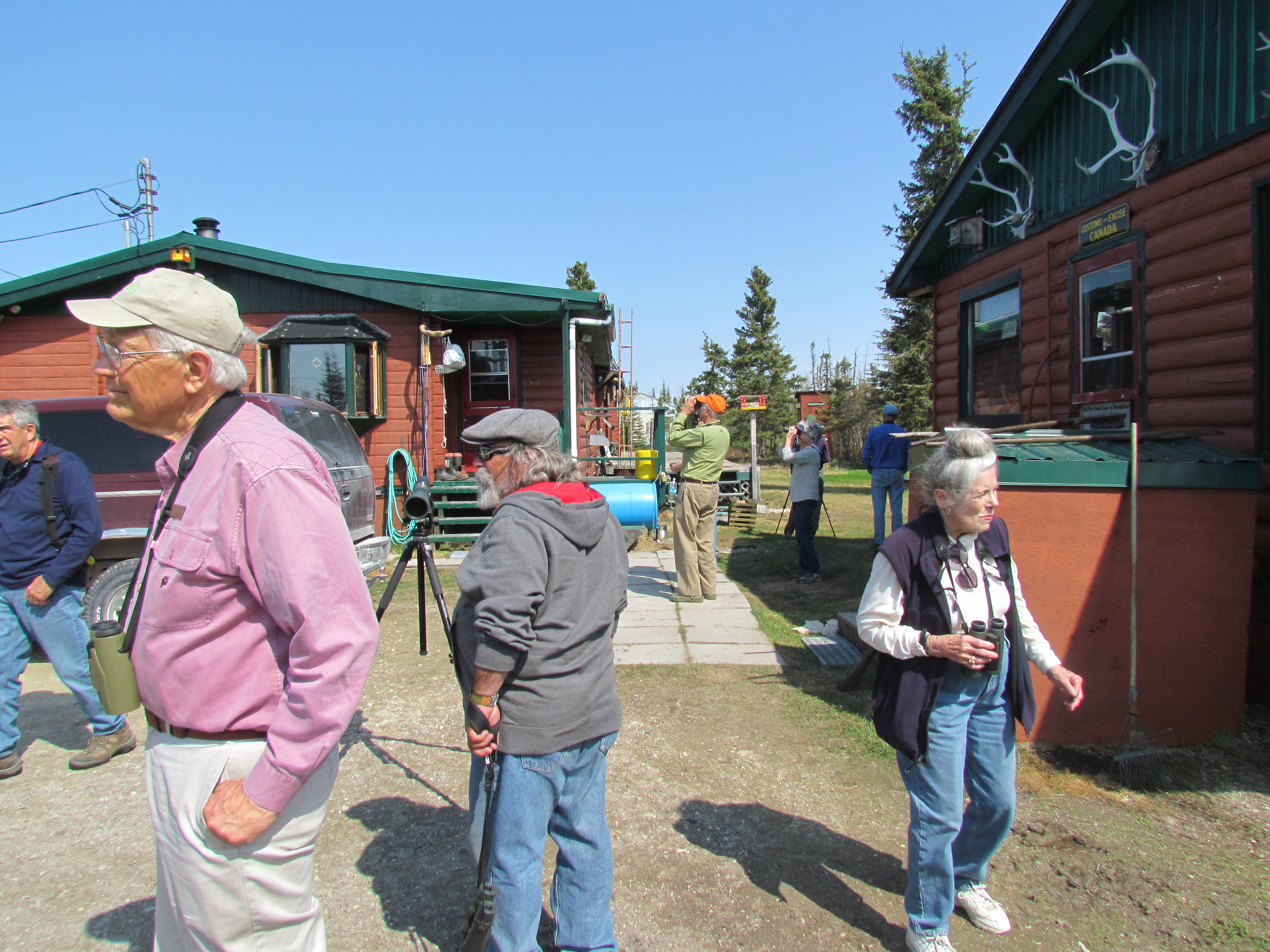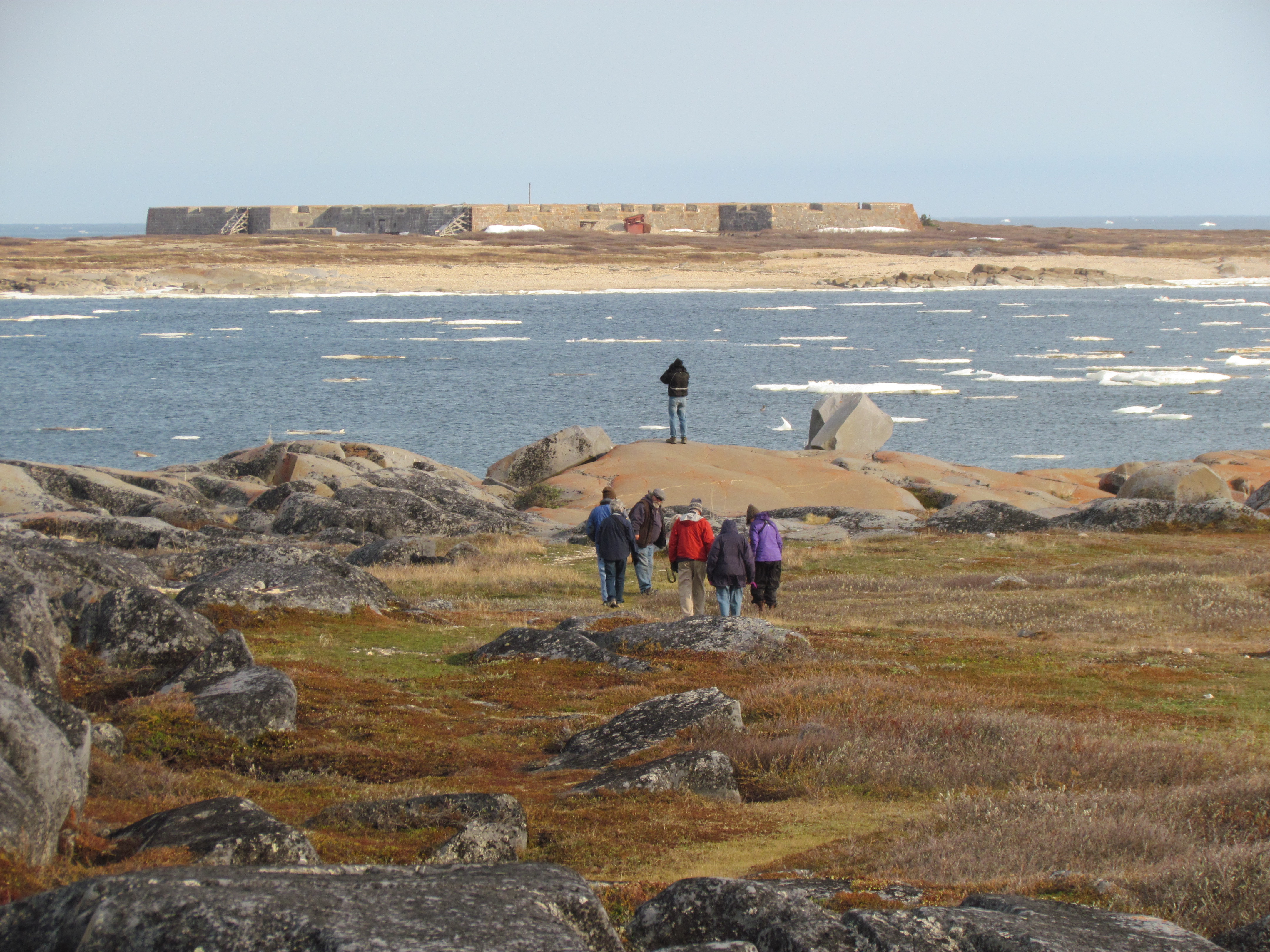
Birding at Cape Merry
Credit: Jeff Wells
Churchill is an island in many ways. It is accessible by a single rail line and by air and, for a few months in summer, by boat. It has about 60 kilometers of roads, most of them unpaved. So birding the area usually means visiting many of the same places multiple times. For our final day and half at Churchill, we did just that. Like many visitors to Churchill we were drawn every morning and one evening to Cape Merry and several Churchill River overlooks near the massive grain elevators. It was here where we finally witnessed close-up views of two Beluga whales as they repeatedly surfaced with their white bulging foreheads. It was here where we marveled at flocks of brightly colored Ruddy Turnstones on floating ice sheets—had they just flown up from Delaware Bay on their way to High Arctic breeding grounds.
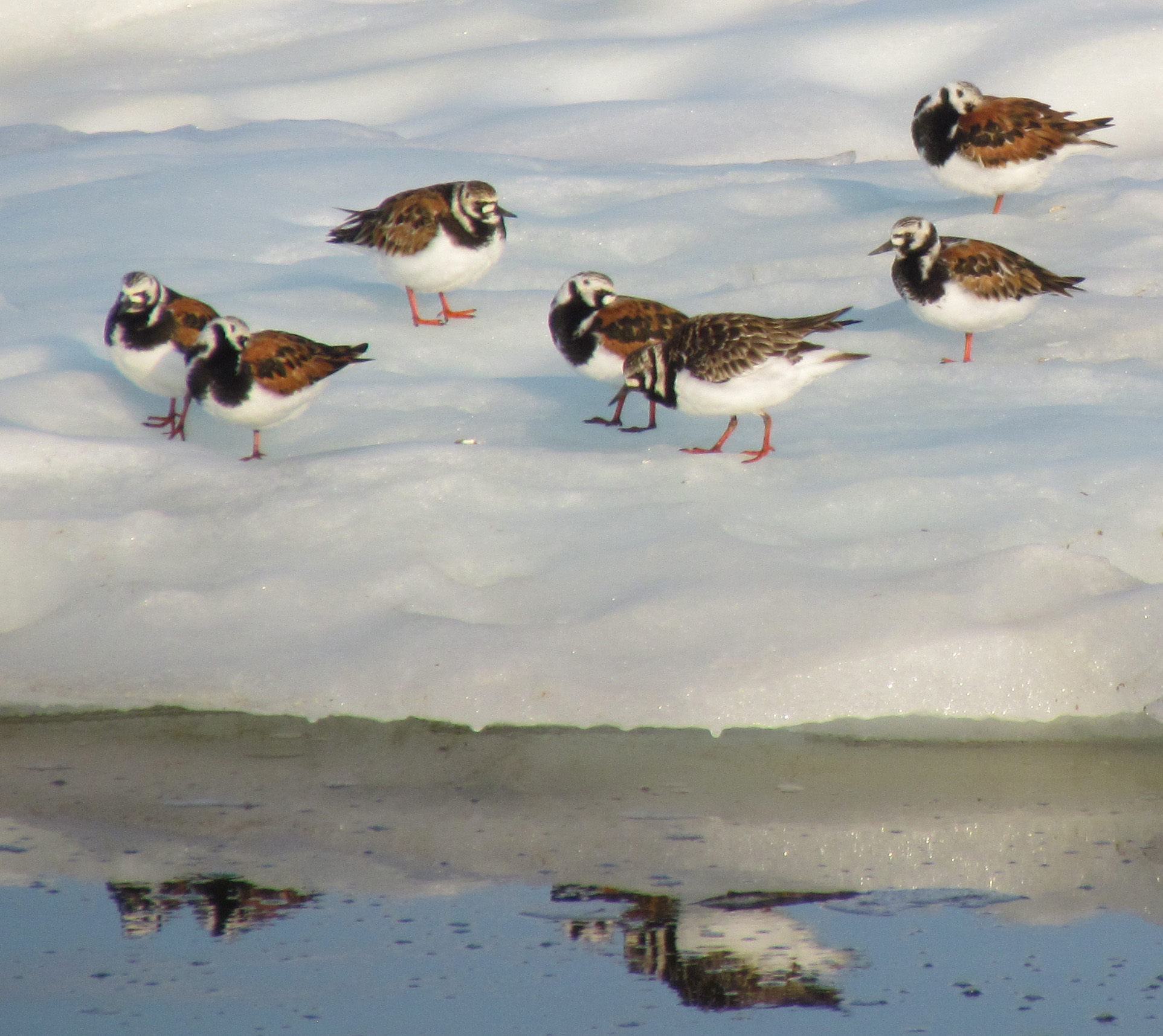
Ruddy Turnstones
Credit: Jeff Wells
Peering out from the old fort at Cape Merry we were amused by the antics of Ringed Seals as they jumped partly out of the water and splashed around. Every time we stopped by Cape Merry at any time of day and even when the wind was howling, a male American Pipit was there exuberantly belting out his repetitive song as he would rise up into the air in a breeding display flight. A pair of dangerous-looking Parasitic Jaegers chased around the Arctic Terns whenever one came up with a small fish. Common Eiders huddled around the shore and fought for space on small ice floes in front us—hard to believe that this particular subspecies survives the long dark winters on Hudson Bay by finding open leads in the vast ice sheets where they can dive for shellfish.
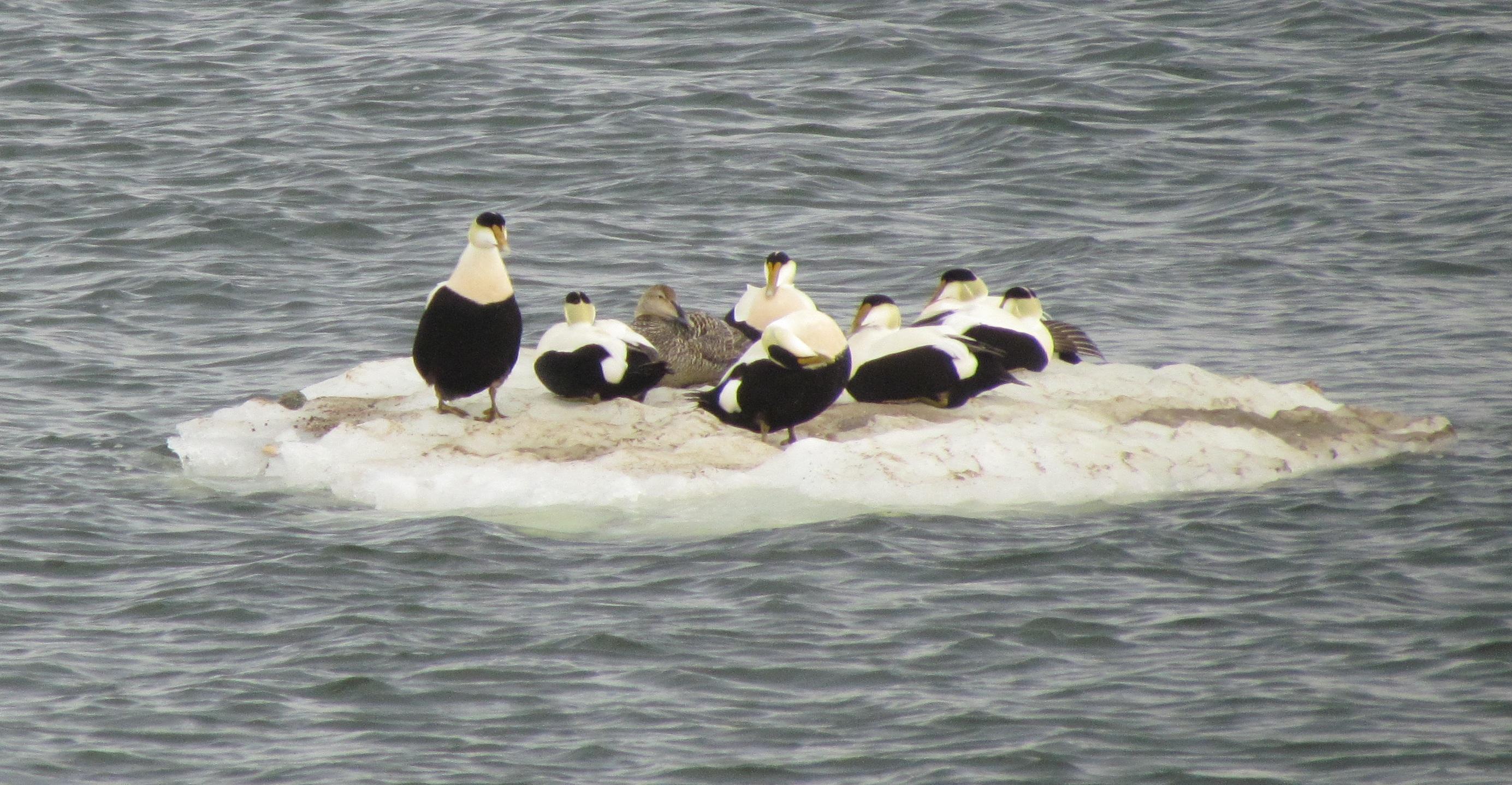
Common Eiders
Credit: Jeff Wells
Goose Creek Road was another favorite spot for us to bird multiple times. One of the group’s most enjoyable stops was at Bill’s Up the Creek bed-and-breakfast. Bill is a wonderful older gentleman who left his native New Jersey years ago for Churchill and apparently never looked back. His log cabin style house is surrounded with bird feeders and the yard rings with bird song and bird activity. As we arrived a male Rusty Blackbird came flying in with food in his bill to feed nestlings in a spruce-top nest (just as an aside, we saw at least four separate Rusty Blackbirds carrying food during the trip). Common Redpolls called and chased each other around the house and fed on seeds Bill had spread under a nearby shed. But the highlight was the incredibly tame male Pine Grosbeak that flew in and landed on a platform feeder about four feet in front of us. It was almost too close to focus the binoculars on! Everyone soaked in views of its beautiful rosy plumage. Before we left, Bill regaled us with stories including about how he slept through the time when a Polar Bear broke in and ransacked his kitchen.
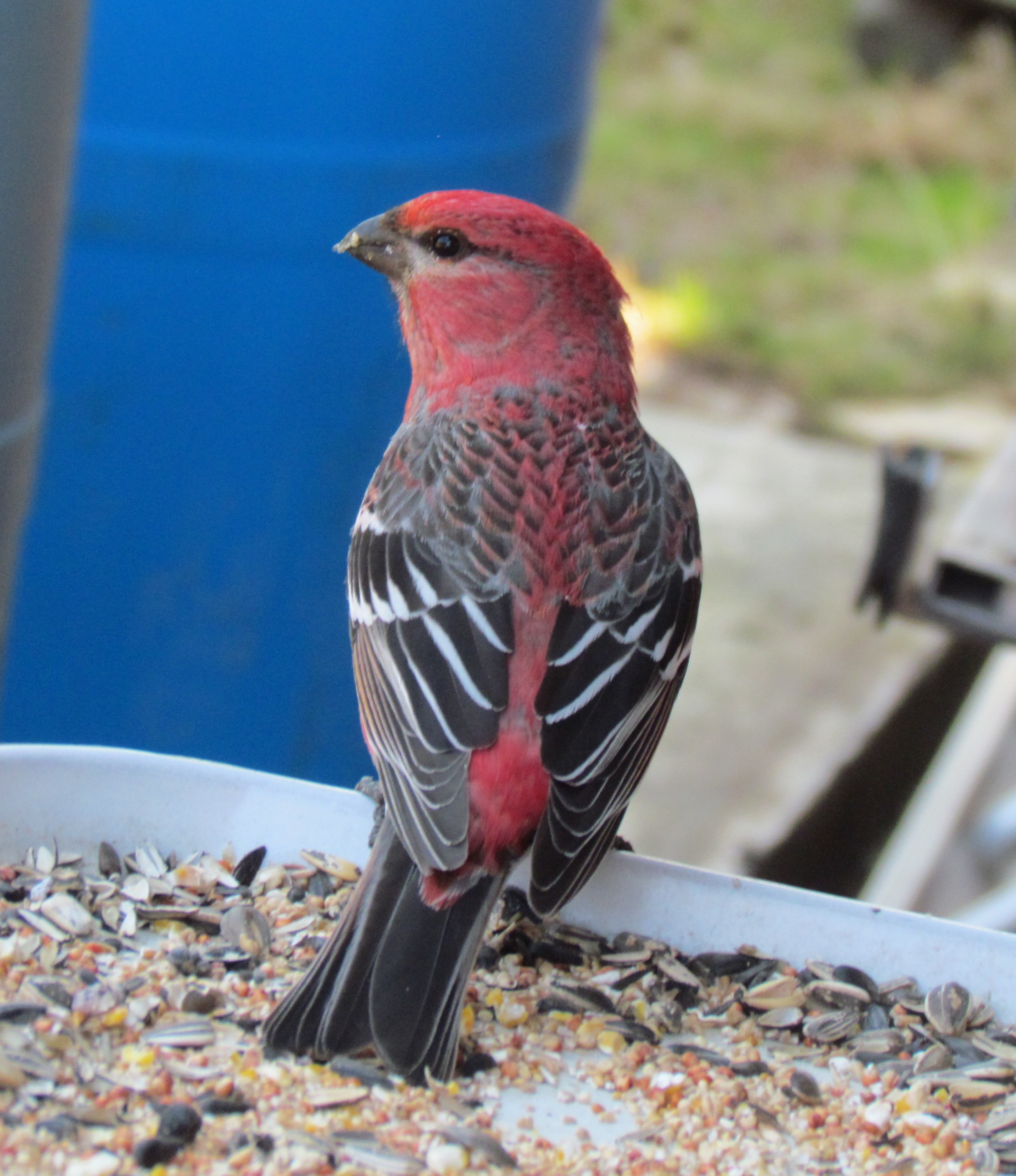
Pine Grosbeak
Credit: Jeff Wells
An important stop for me was the Old Dene Village on Goose Creek Road. After reading the incredibly difficult and powerful story of the forced relocation of the Sayisi Dene to Churchill in 1955 in the book Night Spirits by Ila Bussidor and Ustun Bilgen-Reinart (University of Manitoba Press, 2000), it was especially meaningful to visit the site where much of the story took place. Tragically, over a third of the community died over a 30-40 year period. Finally, community leaders brought the remaining people back to establish a new community within their traditional lands far from Churchill. It was fitting of a story of rebirth that the area around the monument to the Old Dene Village was teeming with singing birds including, White-crowned, White-throated, Lincoln’s, and Fox Sparrows and even a rare (for Churchill) singing Clay-colored Sparrow.

Sayisi Dene Memorial
Credit: Jeff Wells
Further on down Goose Creek Road we had more incredible birding. Just before the Goose Creek Bridge we watched and listened to the beautiful flutey song of a Gray-cheeked Thrush. In the marshy expanses beyond the tour we scanned through the Bonaparte’s Gulls and finally spotted the distinctive black underwings of a flying Little Gull—one of the sought-after species by many North American birders.
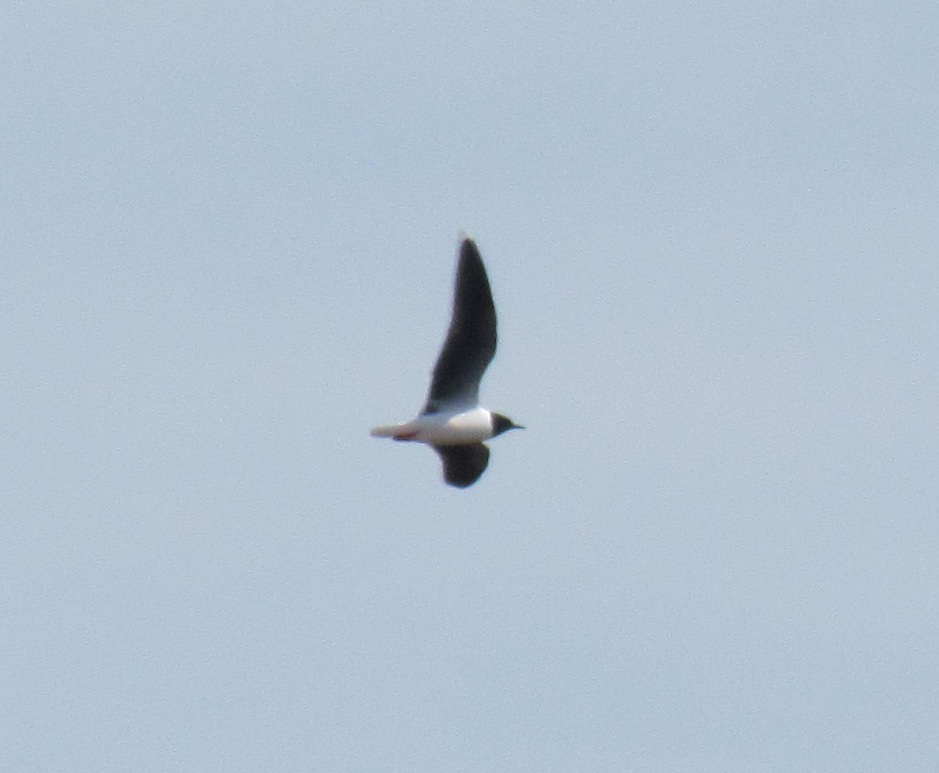
Little Gull
Credit: Jeff Wells
After breakfast on our final day in Churchill we had the good fortune to have the Mayor of Churchill, Michael Spence, stop by and chat with our group. He described the days when he was a kid when Churchill was bustling with thousands of people from the U.S. and Canadian military bases and rocket launch facilities. He talked about how the community coped with the changing economic conditions when the bases closed and the population declined to its current level of around 1,000 permanent residents. Churchill has worked hard to maintain a positive quality of life for its residents and is proud of its large center which includes a school, hospital, hockey rink, pool, bowling alley, gym, and town offices all under one roof! Along with its ecotourism economy based largely around tours in the late fall and early winter to see Polar Bears, Churchill is also a key staging area for communities further north and for transportation of equipment for mining exploration and development further north.
Later that day we flew back to Winnipeg on one of Calm Air’s new and very comfortable small jets, enjoying freshly baked cookies, as we viewed the incredible boreal landscape of northern Manitoba.
In our nine days in Manitoba we had just sampled a small taste of the ecological riches of this vast province that is nearly as large as Texas (649,950 square kilometers/250,900 sq mi). It’s easy to forget that it is over 600 miles (1000 km) from Winnipeg north to Churchill! Manitoba also has some of the largest blocks of unfragmented boreal habitat in Canada—115 million acres (467,000 km2) of it supporting an estimated 100-300 million breeding birds. We had tallied 169 species in our Manitoba journey and we were happy. But we also left knowing that there is much more conservation work to be done in Manitoba and fortunately there are many good people hard at work to see it gets done. Our Audubon friends are among those who will be supporting and watching because the birds of Manitoba are also the birds of their own backyards, wetlands, parks, and preserves.
Here are a few audio clips I was able to record during this leg of the journey:
![]() Gray-cheeked Thrush recording >
Gray-cheeked Thrush recording >


